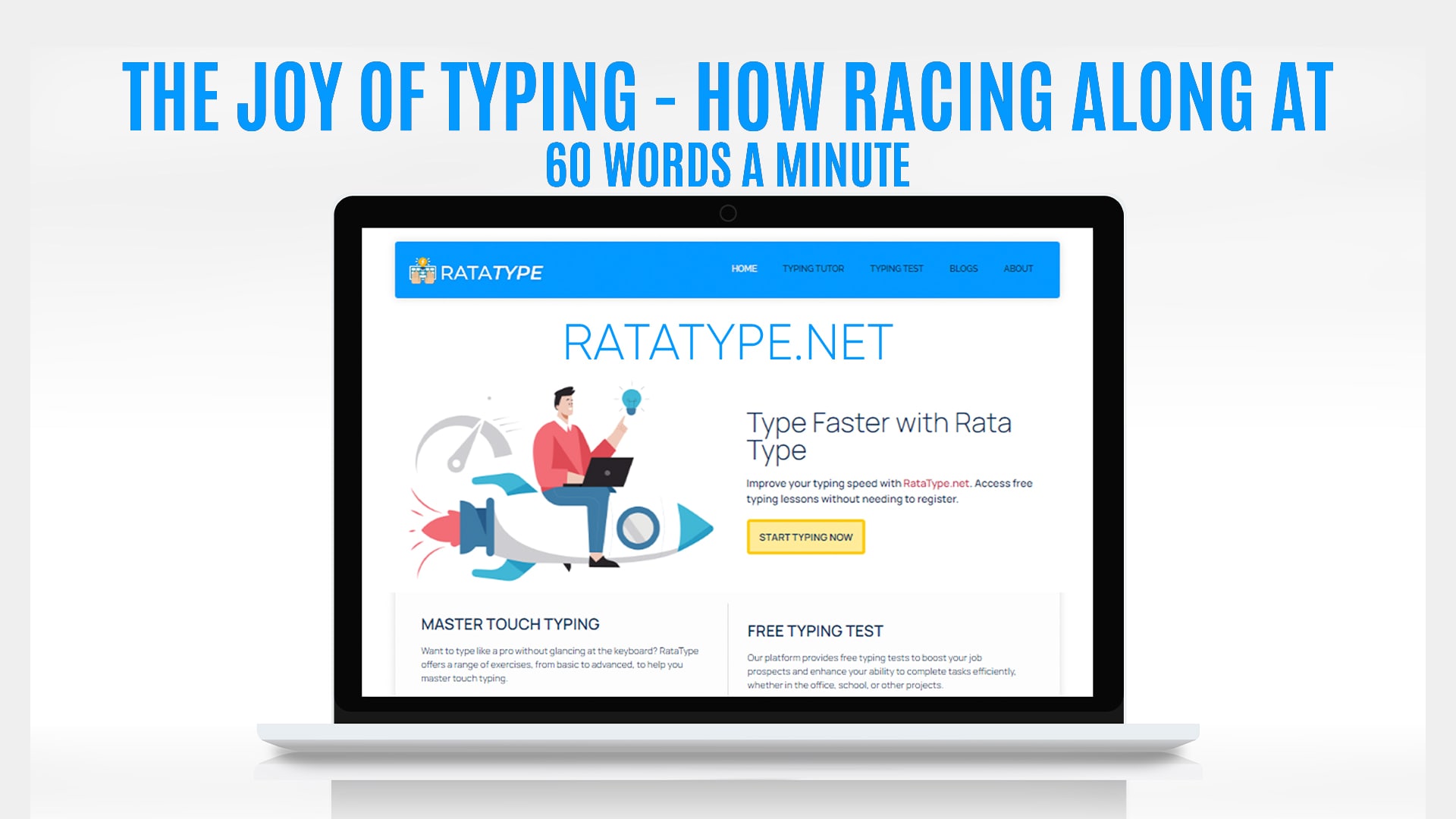Typing is a skill that has transformed from a necessity for administrative tasks to a vital part of everyday communication and work. Imagine effortlessly typing at 60 words per minute (WPM), the keyboard becomes an extension of your thoughts. This exhilarating pace not only boosts productivity but also opens doors to exciting opportunities. Let’s delve into the world of typing, exploring how you can achieve 70 WPM, what constitutes a good typing speed, the advantages and disadvantages of typing, its importance for students, and the basics of the home row on a QWERTY keyboard.
How to Get 70 WPM Typing Speed?
Achieving a typing speed of 70 WPM might seem daunting, but it’s an attainable goal with the right approach. Here are some tips:
Practice Regularly
Consistency is key. Spend at least 15-30 minutes daily on typing practice.
Use typing lessons on platforms like Ratatype to measure your progress and refine your skills.
Focus on Accuracy
Speed is secondary to accuracy. Concentrate on hitting the right keys before worrying about your pace.
Regular typing tests can help identify areas for improvement.
Use Proper Hand Placement
Position your fingers correctly on the home row keys (“ASDF” for the left hand and “JKL;” for the right).
Keep your wrists relaxed to avoid strain and increase efficiency.
Expand Your Vocabulary
Familiarity with a wide range of words can reduce hesitation while typing.
Read extensively and practice typing unfamiliar words.
Use Typing Software and Games
Engaging in typing games makes practice enjoyable and effective.
Ratatype offers free tools and certificates to motivate your progress.
How Many Words a Minute Is Good for Typing?
Typing speeds vary based on purpose and proficiency. Here’s a general guide:
Beginners: 20-40 WPM
Average: 40-60 WPM
Professionals: 70-100 WPM
For most people, a speed of 40-60 WPM is adequate for work and daily tasks. However, for roles like transcription, data entry, or content creation, aiming for 70 WPM or more can provide a significant edge.
Typing Speed Test – One Minute English Typing Test (WPM)
A one-minute typing test is a popular way to evaluate your WPM and accuracy. Here’s how it works:
Choose a Reliable Platform
Ratatype is an excellent choice, offering free, user-friendly typing tests.
Prepare Your Workspace
Sit comfortably with proper posture to minimize distractions and maximize efficiency.
Begin the Test
Type the given text as accurately and quickly as possible.
Avoid backtracking to correct mistakes during the test to maintain speed.
Analyze Your Results
Review your WPM and accuracy percentage.
Identify common errors and focus on improving them in subsequent practice sessions.
Advantages and Disadvantages of Typing
Advantages:
Efficiency
Typing allows you to process and communicate information quickly.
Improved Focus
Mastering touch typing reduces mental load, letting you concentrate on content rather than keystrokes.
Career Opportunities
Many professions require typing proficiency, making it an essential skill.
Accessibility
Typing ensures you can easily navigate digital platforms and participate in online education or work environments.
Disadvantages:
Physical Strain
Prolonged typing can cause repetitive strain injuries (RSI) or carpal tunnel syndrome.
Overreliance on Technology
Excessive typing may reduce traditional writing skills.
Learning Curve
Achieving high speeds and accuracy requires time and consistent effort.
Why is Typing Important for Students?
Typing is a foundational skill for students in the digital age. Here’s why it matters:
Enhanced Learning
Typing assignments, notes, and research efficiently saves time for deeper learning.
Preparation for the Workforce
Many careers demand typing skills, making early proficiency a valuable asset.
Improved Communication
Students can communicate effectively in academic settings and collaborative projects.
Access to Resources
Efficient typing enables students to make the most of online educational tools and platforms like Ratatype.
What is the Home Row on a QWERTY Keyboard?
The home row is the central row of keys on a QWERTY keyboard where typists position their fingers to start typing. The keys are:
Left Hand: A, S, D, F
Right Hand: J, K, L, ;
Importance of the Home Row
Foundation for Touch Typing
It’s the starting point for all typing movements, ensuring efficiency and accuracy.
Finger Placement
Each finger is responsible for specific keys, reducing unnecessary hand movement.
Muscle Memory
Regular practice on the home row builds muscle memory, enabling faster typing speeds over time.
How can I improve my typing speed to 70 WPM?
Regular practice, proper hand placement, and using Ratatype can help enhance your typing speed.
What is considered a good typing speed?
A good typing speed is generally 40-60 WPM for daily tasks and 70 WPM or more for professional roles.
What is a one-minute typing test, and how does it work?
A one-minute typing test evaluates your WPM and accuracy by having you type a given text quickly and correctly.
What are the advantages of typing?
Typing improves efficiency, focus, career opportunities, and accessibility in digital environments.
Why is the home row important for typing?
The home row is essential for touch typing, providing a foundation for finger placement and building muscle memory.
Typing is not just a practical skill; it’s a gateway to efficiency and opportunity. Whether aiming for 70 WPM or mastering the basics, Ratatype provides free resources and certificates to help you achieve your goals. Begin your typing journey today and unlock the joy of racing along at 60 words a minute or more!

